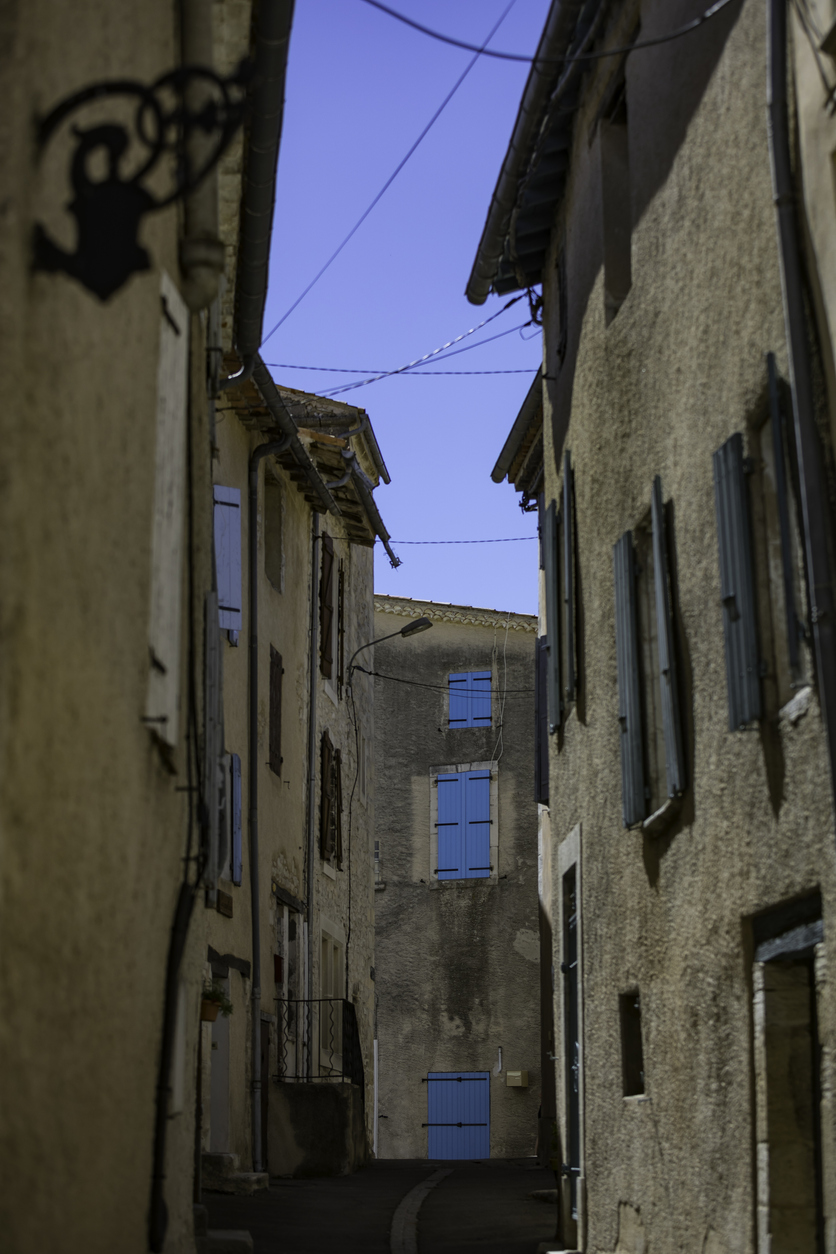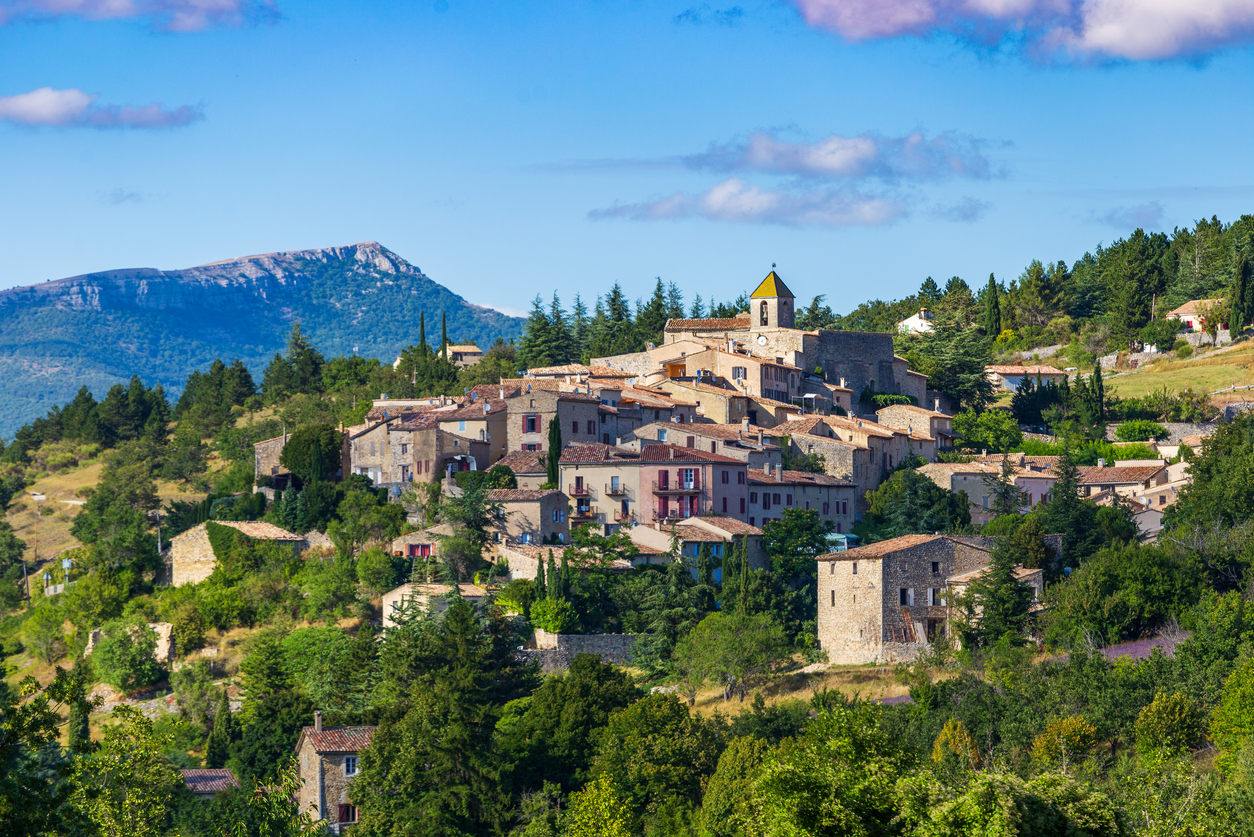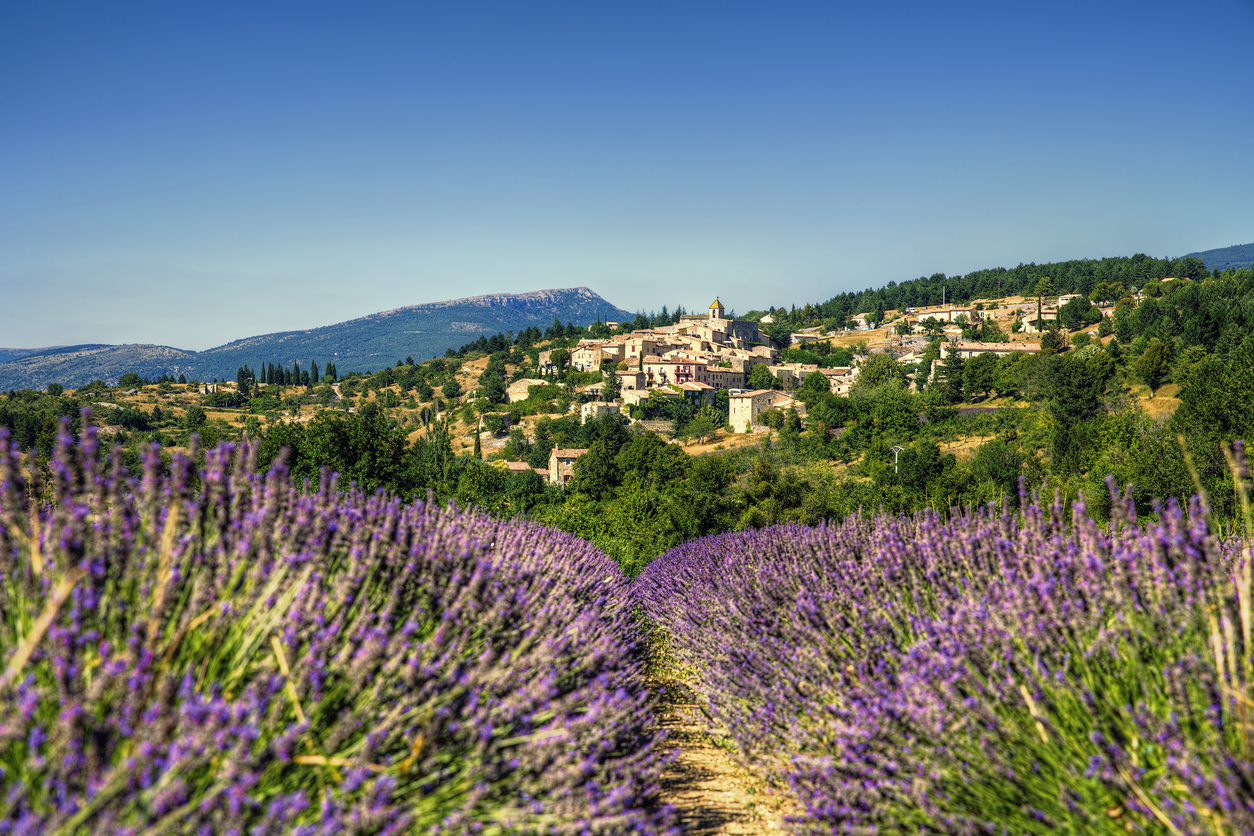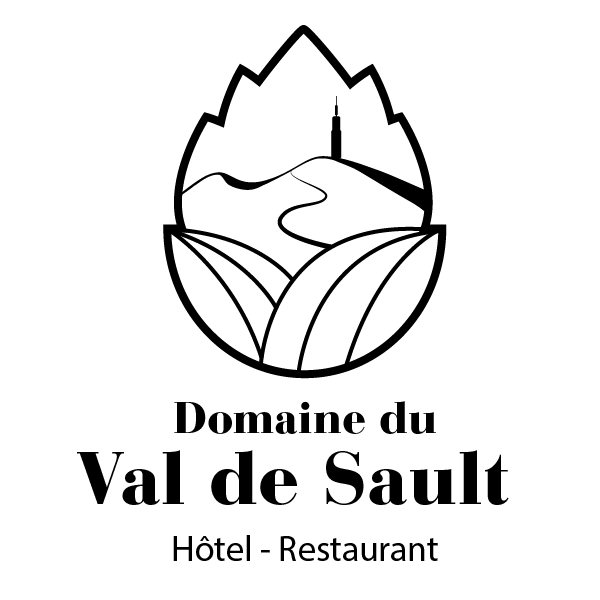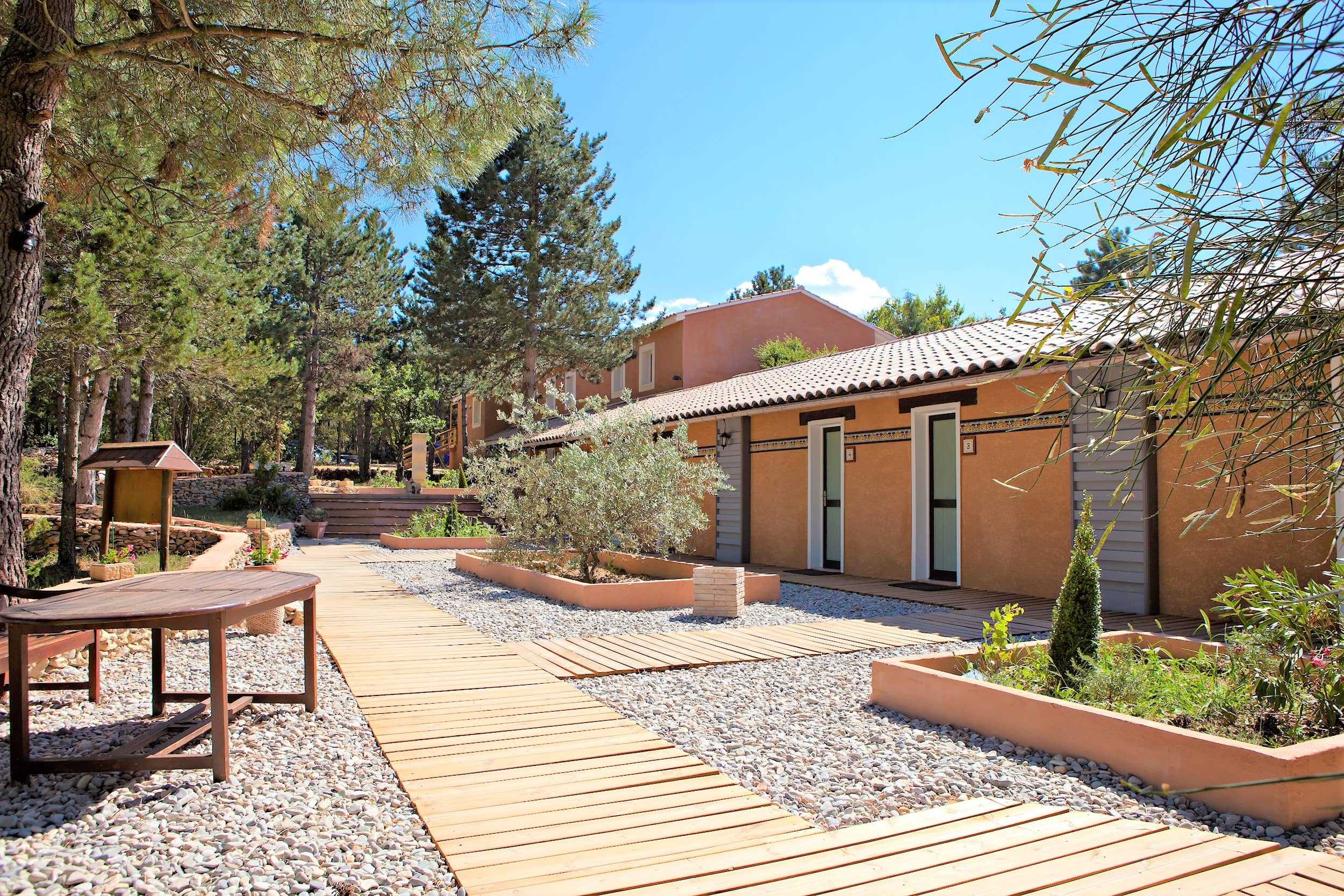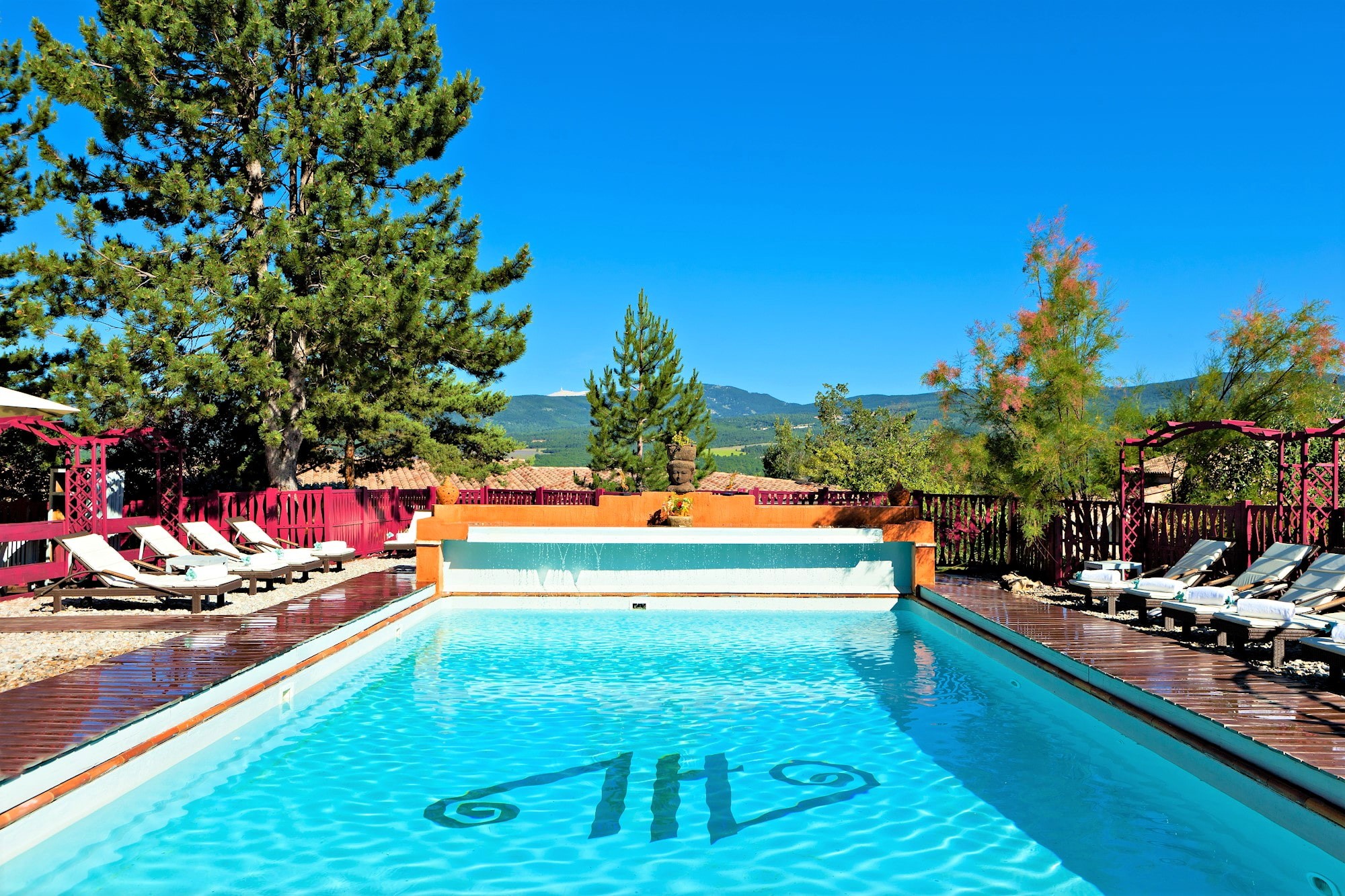
Bike ride from our hotel Luberon piscine Val de Sault 4*.
Discover our suggestions for walks in Provence that will appeal to young and old alike:
On the lavender lined paths, cycling in the Sault country and cooling off in the pool of a 4 star hotel
Following the pretty picturesque roads from the village of Sault to Aurel, then from Saint-Trinit to Saint Christol, the colours and scents become enchanting.
The landscapes around the Mont Ventoux will take your breath away and every viewpoint will become a postcard. Discover the Provence comtadine starting from the 4 star Hotel Luberon piscine Val de Sault. We propose three breathtaking itineraries of nature and beauty.
From Beaumes-de-Venise
For the first itinerary, you will leave Beaumes-de-Venise from the market place, about 50 minutes by car from our Hotel Luberon Piscine Val de Sault, to follow the bicycle signs towards Lafare. Beaumes-de-Venise is nestled between vineyards and olive trees, near the Dentelles de Montmirail.
Arriving at the charming village of Lafare you will take the direction of Le Barroux where you will discover another picturesque village typical of this Provencal region. You will then take the old road to Caromb and join the D21 to reach the village of Caromb. You will then reach the village of Saint-Hippolyte Le Graveyron.
The gorges of the Nesque
We propose a second itinerary to discover the Gorges de la Nesque, an impressive natural site not to be missed in the Vaucluse. You will drive to Villes-sur-Auzon, about 25 minutes from the Luberon pool hotel Hostellerie du Val de Sault. After crossing the village, you will take the road to the Nesque gorges. Here caution is advised, despite its breathtaking scenery, the gorges are lined with ravines and its exceptional nature attracts a large number of cyclists in high season. Arriving in Monieux, you will enjoy passing by its pure water lake and then continue the ride to Sault, a picturesque village in Provence and finish your adventure in the village of Méthamis.
From Saint Didier
Finally, a last alternative walk can be the one starting from Saint Didier and which begins at the village post office car park, a 45 minute drive from our Hotel Luberon piscine Val de Sault. From here you will cross the new square and pass under the porch of the Mairie, be sure to observe and pause at the old wash house before taking the road to Venasque. Once you arrive in the village of Venasque, let yourself be charmed by its cobbled streets, you won't miss the view of the magical panoramas of the region. By taking the small road that joins the D247 you will continue your way to the village of Bosset.
Finally, enjoy the last of your bucolic walk to La Roque sur Perne, where you can stop to visit and enjoy the character of the village, and why not try the local cuisine!
